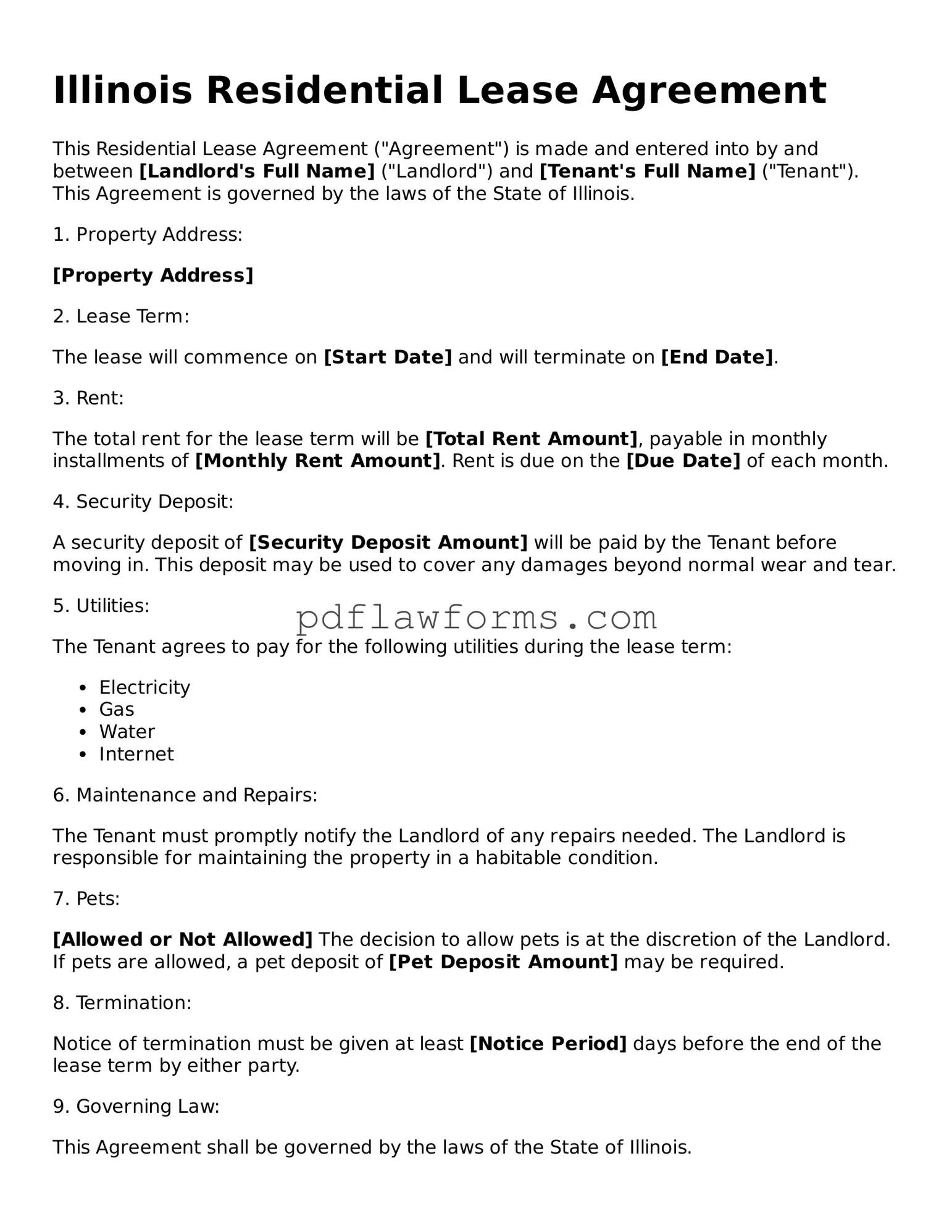When filling out the Illinois Residential Lease Agreement form, many people overlook crucial details that can lead to complications later on. One common mistake is failing to include the correct names of all tenants. It's essential to list everyone who will be residing in the rental unit. Omitting a tenant can create legal issues regarding responsibilities and rights under the lease.
Another frequent error involves the lease term. Some individuals mistakenly select the wrong start and end dates. This oversight can lead to confusion about when the lease begins and ends, potentially resulting in disputes over rent payments and tenancy duration.
People often neglect to specify the rental amount clearly. It's important to write down the exact monthly rent and any additional fees. Ambiguities in the payment section can lead to misunderstandings and disagreements between landlords and tenants.
Security deposits are another area where mistakes commonly occur. Failing to indicate the amount of the security deposit or not outlining the conditions for its return can create problems. Both parties should understand the terms related to the deposit to avoid disputes when the lease ends.
Some tenants mistakenly overlook the section regarding maintenance responsibilities. Not clarifying who is responsible for repairs can lead to frustration and conflict. Clearly defining these responsibilities helps prevent issues during the lease term.
Another mistake is not including any special provisions or rules that might apply to the rental property. If there are specific regulations or agreements, such as pet policies or smoking restrictions, these should be documented in the lease. Ignoring this can lead to misunderstandings down the line.
Many individuals also fail to read the entire lease agreement before signing. Skimming through the document can result in overlooking critical clauses or obligations. Taking the time to read the lease thoroughly ensures that all parties are aware of their rights and responsibilities.
Lastly, not keeping a copy of the signed lease can be a significant oversight. Both tenants and landlords should retain a copy for their records. Having a copy on hand is essential in case any disputes arise or clarification is needed regarding the terms of the lease.
